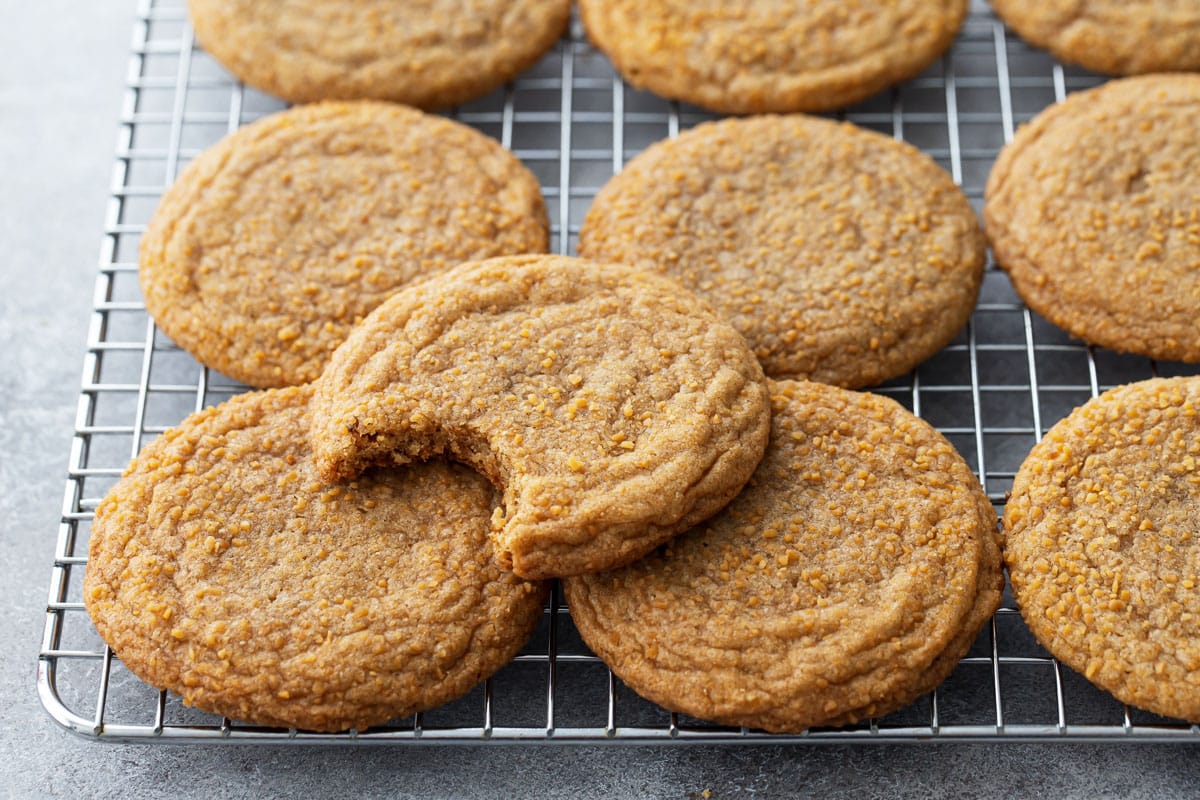7 Grounding Yoga Poses, Pranayama & Meditation to Balance Vata Dosha
Vata dosha is the Ayurvedic energy linked with air and space, and when imbalanced it creates qualities like coldness, restlessness, irregular routines, anxiety, and disturbed sleep. People with a dominant Vata body type often experience hyperactivity, mood swings, and...
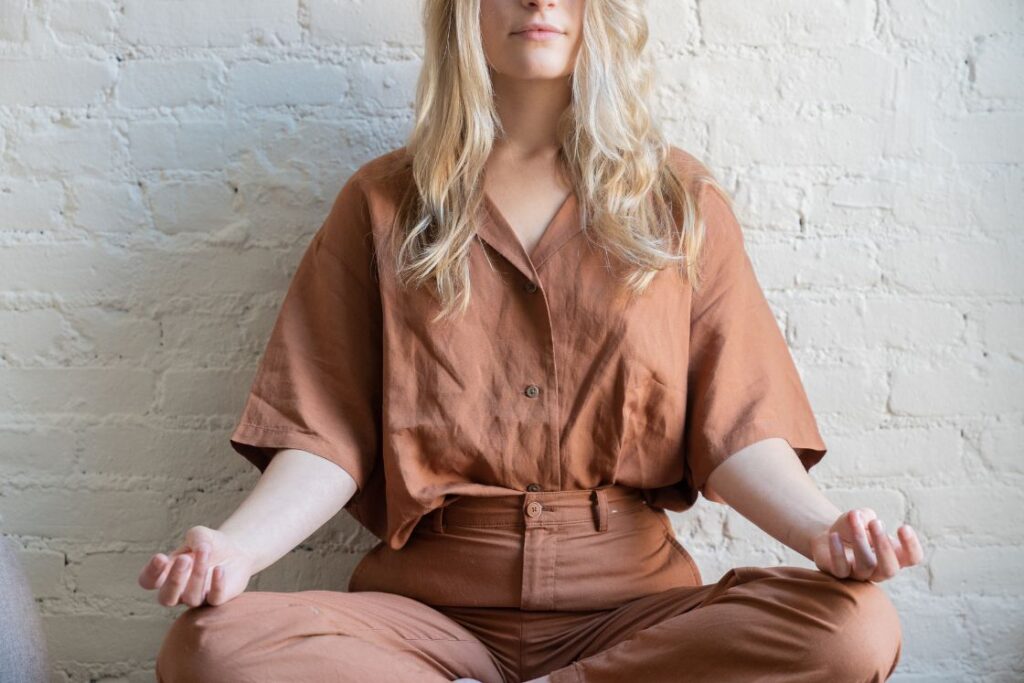

Vata dosha is the Ayurvedic energy linked with air and space, and when imbalanced it creates qualities like coldness, restlessness, irregular routines, anxiety, and disturbed sleep. People with a dominant Vata body type often experience hyperactivity, mood swings, and stress when this energy goes out of balance.
Yoga is one of the most effective ways to calm and balance Vata dosha. Gentle movements, grounding postures, warming pranayama (breathing practices), and steady meditation help bring stability to the mind and body.
In this guide, you will learn 7 grounding yoga poses, calming pranayama techniques, and meditation practices specifically designed to balance Vata dosha.
Which yoga is best for vata dosha?
For balancing Vata dosha, yoga practices should focus on grounding, warming, and calming movements. This includes standing postures, gentle twists, slow transitions, and long-held poses to build heat and stability in the body.
The following yoga styles are particularly beneficial for Vata:
Hatha Yoga – Focuses on alignment and slow, steady poses. Yin Yoga – Uses long holds to release tension and calm the nervous system. Restorative Yoga – Supports deep relaxation and stress relief through supported postures.These practices help promote relaxation, balance energy, and reduce Vata-related anxiety and restlessness.
Grounding yoga poses for vata dosha
By incorporating grounded and rooted aspects into asana practice slowing down, providing a quality of solidity and firmness—you can bring balance to the light, airy, and mobile qualities of vata dosha.
Lowering Vata can be accomplished with gentle yoga that offers firmness or restorative.
Each yoga pose should be performed repeatedly by a vata person, but only for a brief period of time. Practice should be done gradually and cautiously. Keep a close eye on the movements between postures as well, completing them mindfully rather than hurriedly moving on to the following pose.
Pose variations that compress the pelvis, such as all forward bends, are therapeutic for Vata because it is prone to constipation (standing or sitting). Pay attention to postures that stretch your thighs and lower back.
Vata, which is vulnerable to anxiety, overexertion, and exhaustion, can be aggravated by quick-paced vinyasas or flow sequences. Pace thoughtfully and slowly, prolonging the time you hold each position, to make a vinyasa more vata-calming.
Here are some beginner-friendly yoga poses you can incorporate into your Vata-balancing routine.
Join Our 5-Day Ayurveda Body Type Workshop
1. Tree Pose (Vrkasana)
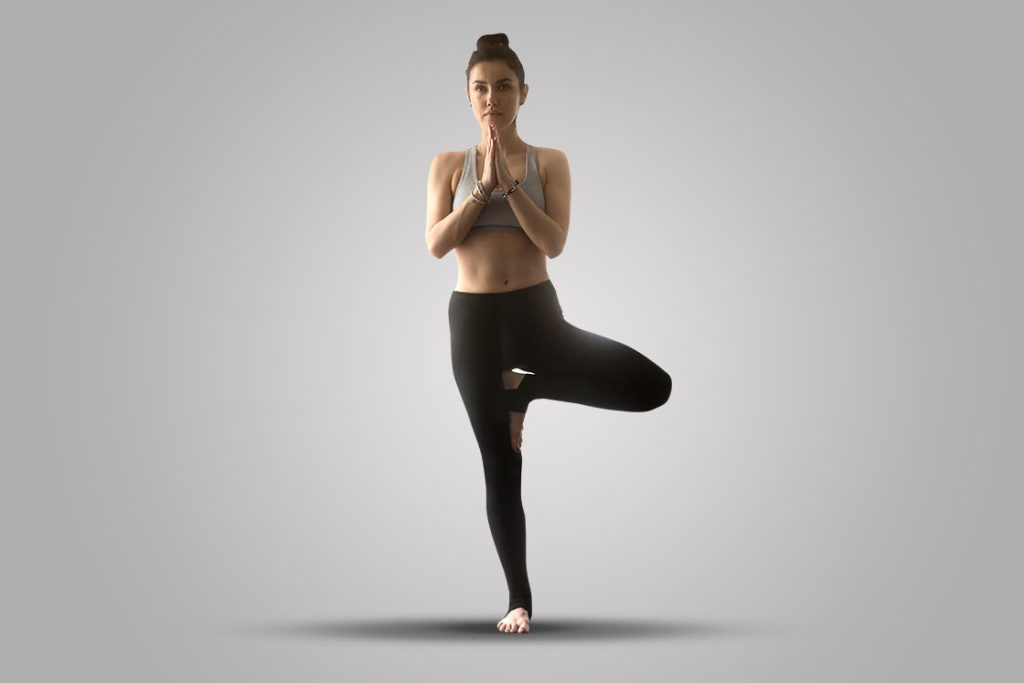
This standing pose is excellent for grounding and balancing your prana vayu, a type of Vata dosha. The balancing part of the pose also manifests in your life by bringing stability, patience, and resilience. It helps to improve mental focus, reduce anxiety and stress and connect to the Earth element. You are also able to generate internal heat as you balance on one leg by engaging your core and leg muscles.
Steps to perform
Standing upright in Tadasana (Mountain Pose). Establish a firm and wide base by spreading the toes wide. Make sure your body weight is spread equally on all four corners of the feet. Shift some weight on your right leg and slowly start lifting the left leg. keep your right leg relaxed and do not lock the knee. Turn your left foot inwards and place the sole on the inside of the right thigh. Press the sole of the left foot and right thigh towards each other to create balance. If you cannot bring your feet to the thigh, you can keep your foot below the knees. Keeping your gaze in the front, on a focal point, to aid with balance. Place your hands in the Anjali Mudra in front of your chest or stretch your arms above your head. Hold this pose for 3 breaths and repeat with the other leg.2. Downward Facing Dog Pose (Adho Mukha Svanasana)
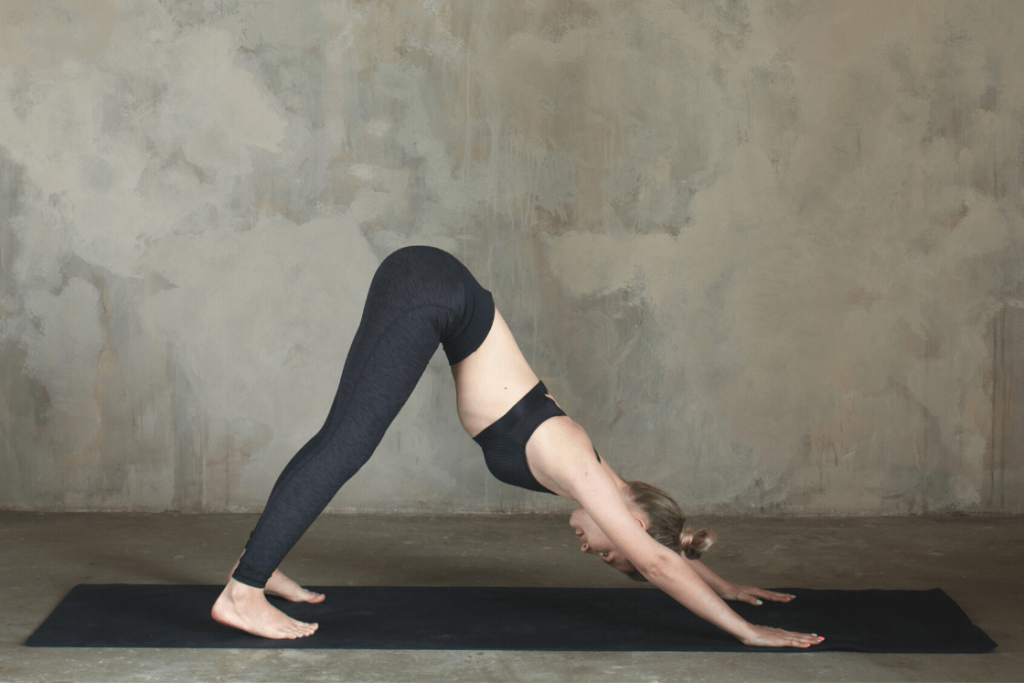 Image: Canva
Image: CanvaThis pose helps balance the various types of vata vayus. It aids in enhancing the circulation to all the body parts, encouraging a calm mind, improving the metabolism and function of the digestive system, aiding in the secretion of feces and urine, and promoting a calm mind with mental clarity.
Steps to perform
Come to a tabletop position. Your arms should be parallel to each other and placed shoulder-width apart and your legs hip-width apart as well. Spread your finger to distribute the weight evenly on your hands. Press your hands and feet firmly onto the ground and lift your knees. Keep lifting your knees till your legs are straight and the buttocks are pointing upwards. Extend your tailbone towards the ceiling to keep your back straight and further lift from the hips. Your body should form an inverted V shape with weight spread evenly in your arms and legs. Let your head and neck hang freely and keep a fixed point as your focal point for a steady gaze. Hold the pose for 3-5 breaths.3. Warrior Pose II (Virabhadrasana II)
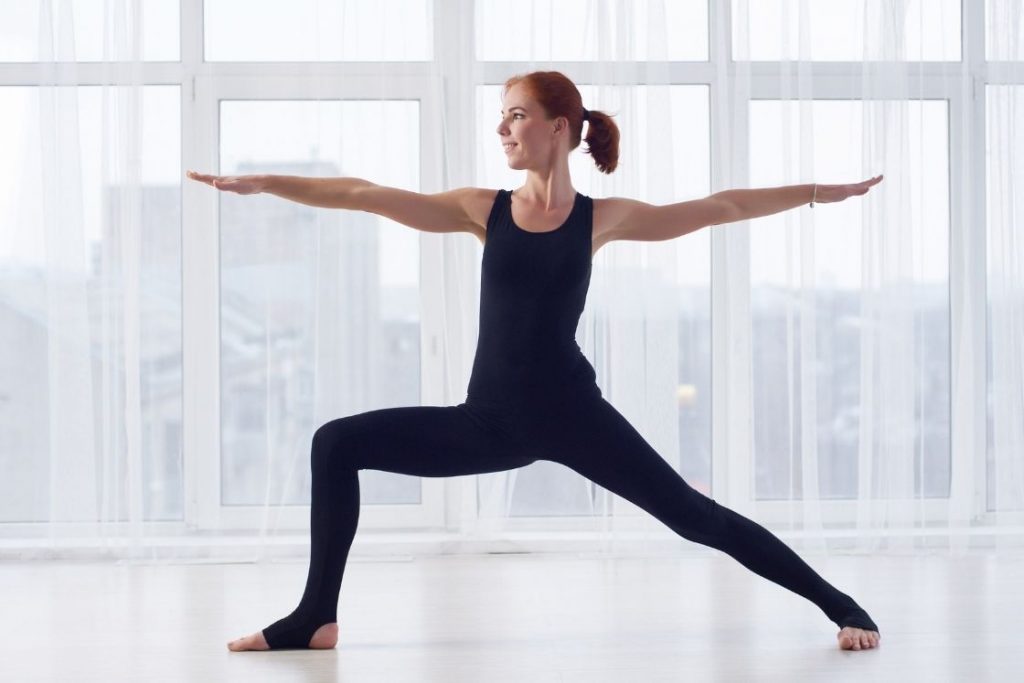 Image Source: canva
Image Source: canvaWarrior Pose II is another grounding pose that also helps you build mental and physical strength. This pose will also help in providing some stability and focus, both towards your pose as well as your life.
Moreover, engaging your core muscles to maintain the pose also helps strengthen the digestive system.
Steps to perform
Begin with the Mountain pose (Tadasana) as you stand facing the longer end of the mat. Spread your legs apart approx. 3-4 feet. Extend your arms sideways and bring them parallel to the ground, with palms down. Make sure your shoulders are not hunched and are away from your ears. Turn your head to the right and fix your gaze on your right-hand fingers. Bend your right knee at 90 degrees while keeping the feet facing forward, stacking your knee over the ankle. Your right thigh should now be parallel to the ground along with your arms. Stretch your left leg to the back and turn your feet at a 45-degree angle. Hold this pose for 3-5 breaths and repeat the pose with the other leg.4. Standing Forward Bend (Uttanasana)
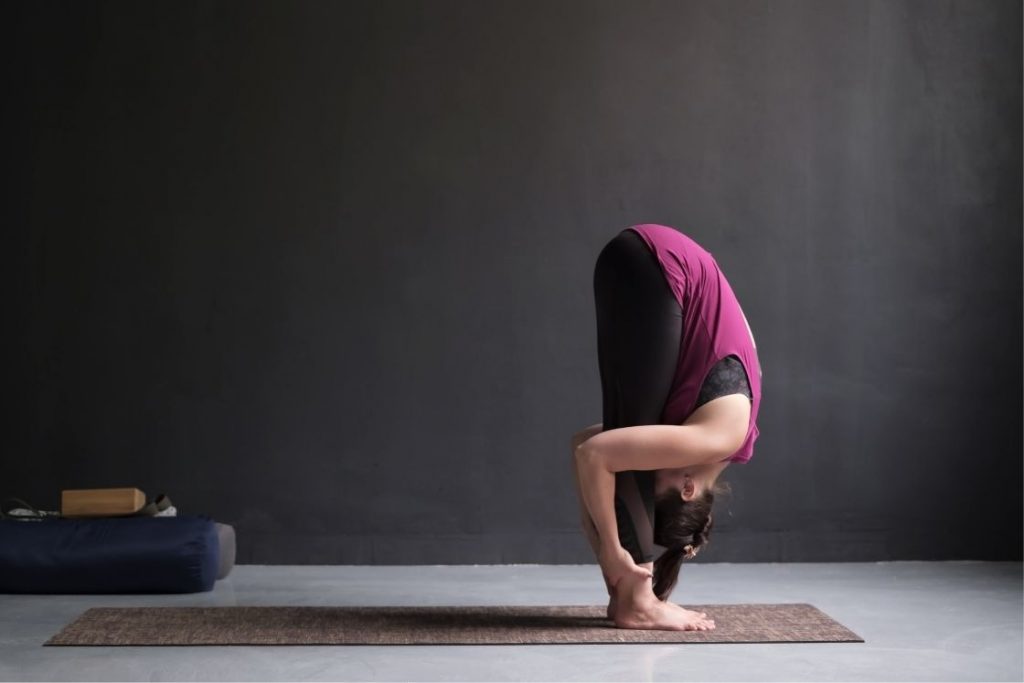 Image Source: canva
Image Source: canvaUttanasana will help in increasing the heat in the internal organs, especially abdominal organs as the abdomen gets compressed in this forward bend. Building internal heat will remove the coldness that a vata might feel regularly.
Moreover, your spine also gets stretched to a significant extent and it promotes circulation towards the head. This will greatly benefit in reducing the anxiety, fear, and insecurity a vata feels occasionally.
It is also a good grounding pose as you need to stay firmly grounded as you bend your upper body forward.
Steps to perform
Stand in Tadasana (Mountain Pose) with your legs slightly apart and firmly placed on the mat. Keep your hands at the bottom of your buttocks. If you feel comfortable, you could also keep your legs closed. Start bending forward from your hips while keeping a straight spine. As you bend, slide your arms down the back of the thighs till they reach the ankles. Your bending will mostly depend on the flexibility of your hip, so do not force yourself to bend fully. You can also rest them on a stack of yoga blocks or books which should be placed on the outside of your feet. Let your head hang freely. Stay in this pose for at least 3-5 breaths.5. Reclined Hero Pose (Supta Virasana)
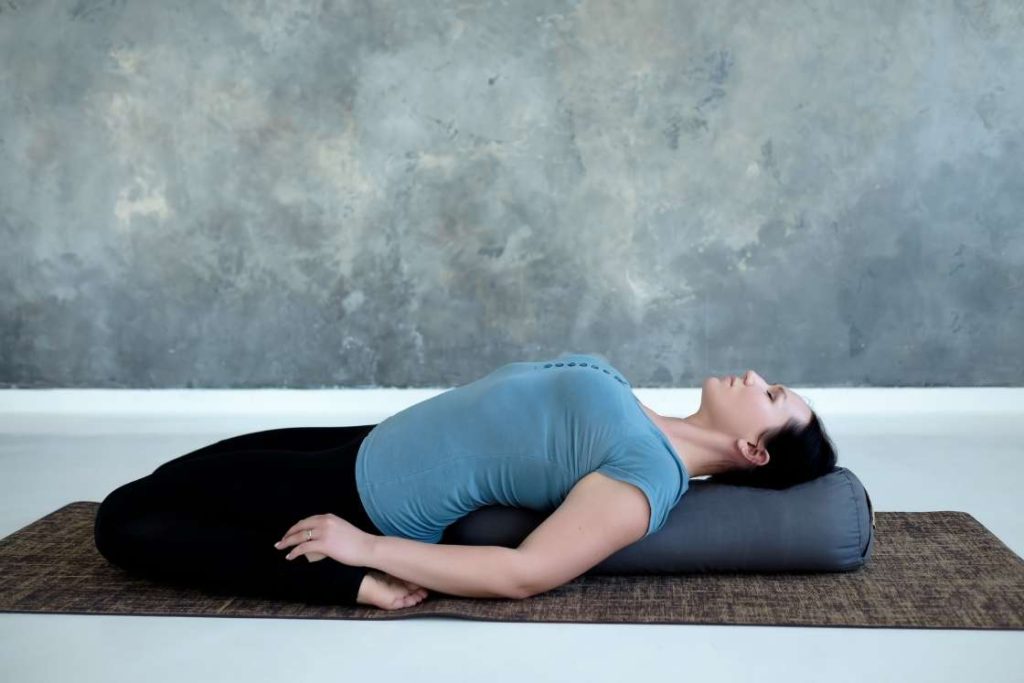 Image: Canva
Image: CanvaSupta virasana will help balance the samana, udana and vyana vayu. This will help with proper digestion and relief from many digestive disorders with proper circulation of oxygen and blood to the heart and lungs.
Moreover, it will also help with the proper circulation of heat in the spine and lower back. Respiratory problems such as asthma can also be cured with regular practice of this pose.
Steps to perform
Stand on your knees on your mat with your thighs spread slightly less than the hip-width. Keep your upper feet flat on the mat. Spread your lower legs to make space for your buttocks to be placed between them. Lower your hips and place your buttocks in the space created. You can use your hands to increase or decrease the space as per your requirement. This is the standard Virasana pose. Now, exhale while pressing your elbows to the floor and begin lean backward. Slowly lean back till you are laying on your back with your hands at your heels. You can also raise your arms overhead with the palms facing upward. Hold the position for 3-5 breaths.6. Child’s Pose (Balasana)
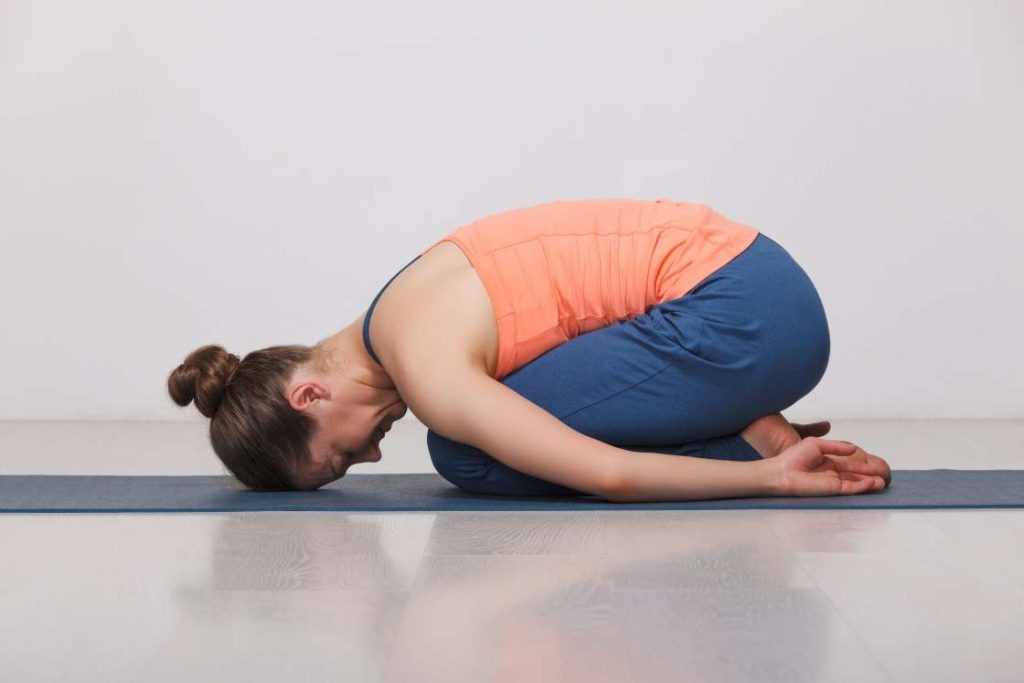 Image: Canva
Image: CanvaThe child’s pose is another calming pose and is encouraged to be practiced when you want to relax your nervous system. In this pose, the head is over the heart, which improves blood and oxygen to the head.
The compression of the abdominal muscles and hips improves the functioning of the organs of the digestive and elimination system. In addition to this, your lower back and spine are also stretched, making sure they are flexible and nourished.
This pose promotes correct breathing patterns as well.
Steps to perform
Sit in Vajrasana (Thunderbolt Pose) on a yoga mat. Place your heels under your buttocks with the top of your feet flat on the floor. Make sure your big toes are touching. Place your hands on your thighs or in front of your knees with palms facing down. Keeping your spine straight, start bending forward till your belly touches your thighs. If possible, bring your forehead to touch the ground or place a yoga block to rest your forehead. For a deeper stretch on your hips and hamstrings and bend, spread your knees apart. This will also create space to rest your upper body fully on the mat. Slide your arms as well as you bend forward. You can also keep them beside your thighs or place them behind your back with hands entwined or in Anjali Mudra. Stay in this position for 3-5 breaths.7. Wind-relieving pose (Pavanmuktasana)
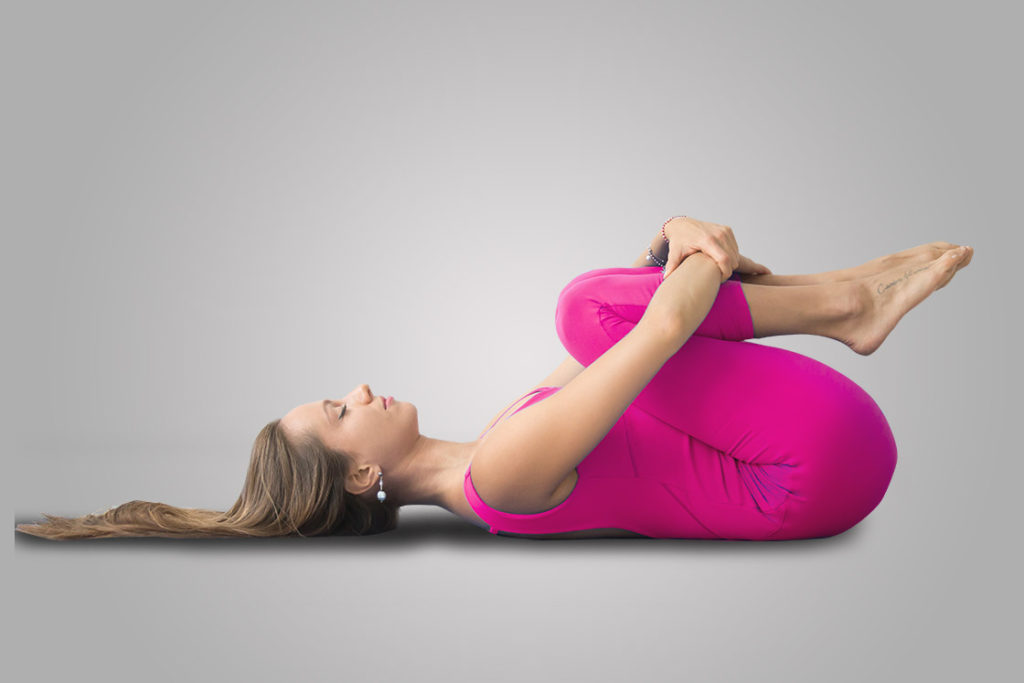 Image Source: Canva
Image Source: CanvaPavanmuktasana aids digestion while also stimulating the hips. The hips are thought to contain repressed emotions and tension, making hip stimulation and opening crucial for releasing imprisoned emotions.
Compressing the abdomen helps in relieving problems of bloating, flatulence, or gas, which is a common complaint by vata people.
Your lower back and thighs also get stretched and stimulated which improves circulation in their muscles well.
Steps to perform
Lie on your back with your legs stretched straight and arms beside your body. Slowly bend your knees and bring them as close to the chest as possible. Place your hands at the back of the knees to hold them steadily or you can wrap your forearms around them. Do not lift your head or upper back when you hold your knees. If you are unable to hold your legs, loop a strap around the knees and hold the end of the straps with both your hands. Decrease the distance between your chest and knees gradually to increase the stretch in the lower back. Hold the knee for 1 minute and gently release.Pranayama for balancing vata dosha
As Vata is mainly about the air element (vayu tattva), it can be easily balanced by pranayama breathing. It will enhance lung capacity, improve oxygen circulation in the organs, promote better flow of the prana, and relax your nervous system.
For the Vata individuals, pranayama encourages generating body heat (reducing the cold quality of Vata), cleansing of the Nadis, and improving the breathing pattern to calm down the anxiety. Practice pranayama before you start with your yoga poses as it will complement the movement of the poses and the benefits that comes with them.
Below are some of the recommended pranayama for vata types:
1. Nadi Shodhana (Alternate Nostril Breathing)
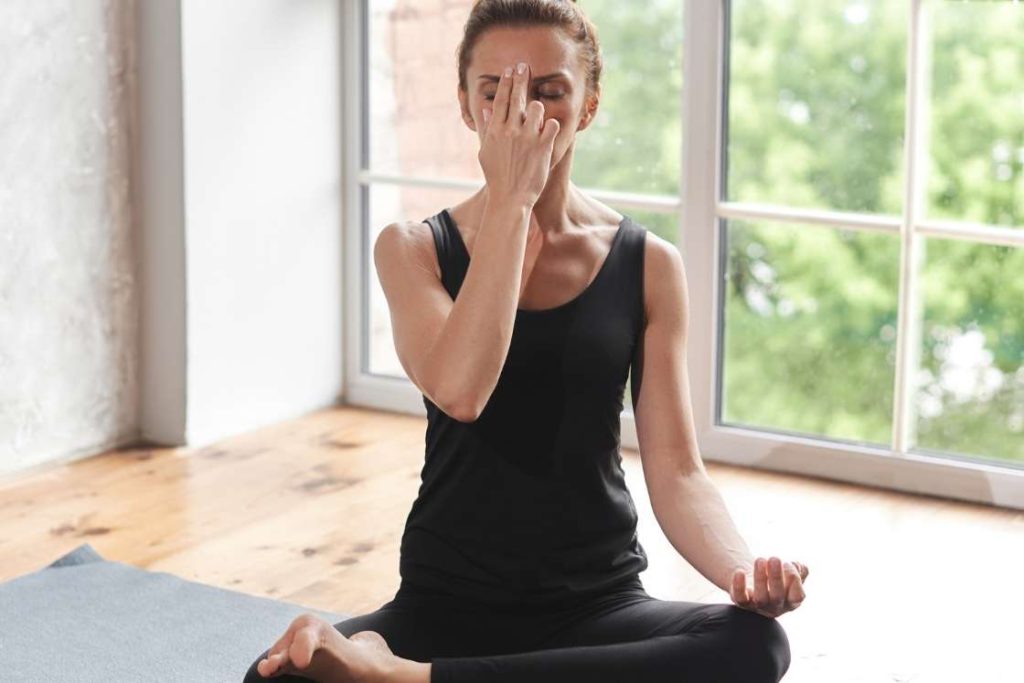 Image: Shutterstock
Image: ShutterstockNadi Shodhana Pranayama has the power to balance all three doshas. For Vata people, it plays a significant pranayama practice as it will cleanse and balance various Nadis for the prana to flow freely in the subtle body. And movement and circulation are the main functions of the vata.
This pranayama’s deep breathing enhances blood circulation throughout the body. Additionally, it ensures the respiratory system’s effectiveness and functionality.
It will also help maintain a calm nervous system and balance both hemispheres of the brain. All of the above benefits will improve creativity, memory power, immunity, the cardiorespiratory system, and the digestive system.
Steps to perform
Sit in a comfortable pranayama position with your back straight. Bring your left hand in the Gyan mudra and place it on your thigh. Make the Vishnu mudra with your right hand as you bring it in front of your face. Fold the index and middle fingers while placing the thumb on the right nostril. Place the ring and little finger adjacent to the left nostril. To open and close the nostrils, the thumb, ring, and little finger will function as lids. Breathe normally for a few seconds to help you control your breathing. Breathe in via your right nostril while covering your left nostril with your ring finger. Breathe out entirely while opening your left nostril and closing the right nostril. Inhale while keeping your left nostril open and your right nostril closed with your thumb. Release the thumb from the right nostril and completely exhale via the left nostril. Practice at least two or three times.2. Bhramari (Humming Bee Breath)
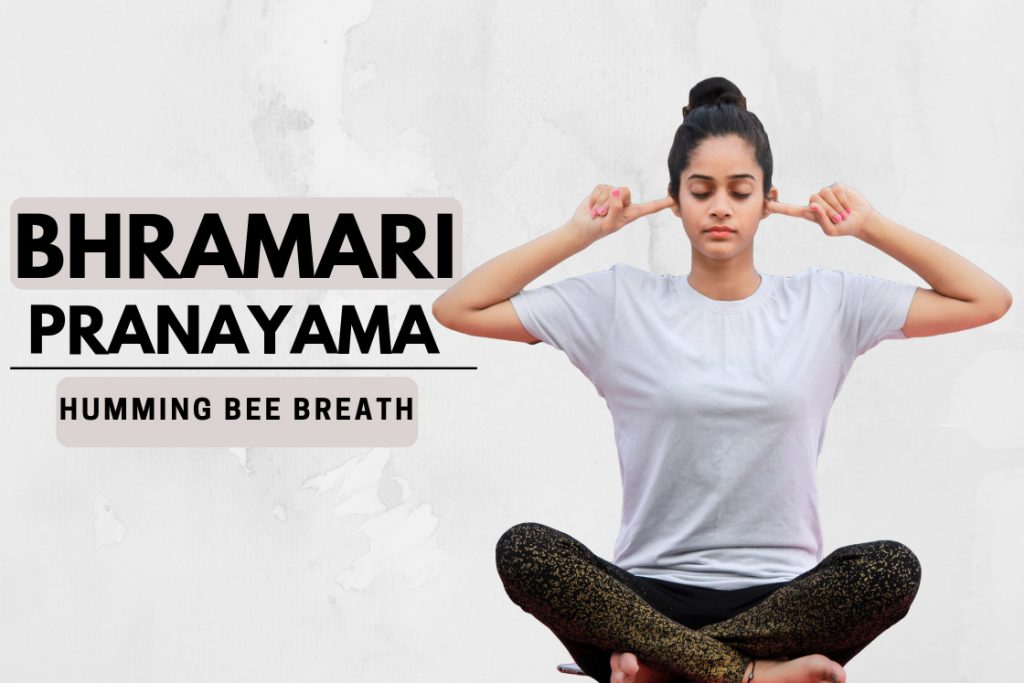 Image: Fitsri
Image: FitsriA vata individual frequently faces the problem of anxiety, nervousness, fear, irregular mood changes, and behavior. This is mostly due to the mobile and flowing qualities which also leads to a lack of proper sleep.
Bhramari pranayama has a calming effect on the nervous system because of its humming tone. It profoundly unwinds the body and brain by inducing deep vibrations. It causes the parasympathetic nervous system to become active, which lowers heart rate, blood pressure, stress, and anxiety to help you relax.
This makes it easier to get a restful night’s sleep.
Steps to perform
Sit in a comfortable pranayama position with your back straight. Put your index fingers on the tragus, the projecting cartilage on the exterior of the ear, to partially shut the ear. Right now, refrain from applying any pressure with your finger. Inhale deeply through your nose, then softly push the tragus as you exhale. Lower your chin as you exhale and begin humming steadily and softly (like “hummmmmmm”) from the back of your throat. Keep extending this sound as long as possible. Repeat it 3-5 times in one sitting.3. Ujjayi Pranayama (Victorious Breath)
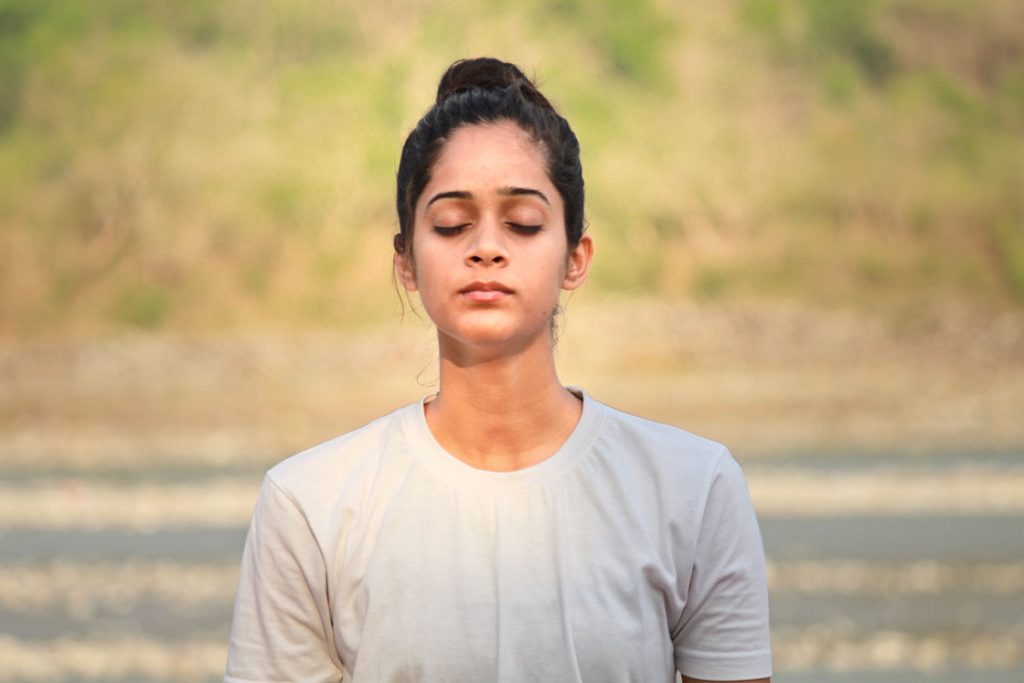
Ujjayi pranayama promotes physical and mental clarity while allowing prana to flow freely. It increases vitality and self-awareness. It also stimulates the Udana Vayu which will improve speech and memory power while balancing the enthusiastic energy of vata people.
Because it raises internal body heat, you should practice this pranayama, especially during the winter. This is why it is one of the most recommended to offset the imbalances caused by the aggravation of the cold quality of the vata.
Steps to perform
Sit in a comfortable pranayama position with your back straight. Constrict your throat and inhale through the nose such that you can feel the air going through your mouth and throat. As you inhale, it should make a rushing noise as if you were snoring. Keeping the throat constricted, exhale through the nose. Inhale through your nose and exhale with your mouth open once you’ve formed a flow. The throat stays constricted throughout the process. Repeat the process for 5-8 rounds. End it by taking a few deep breaths with the mouth closed for 1-2 minutes.Meditation for balancing vata dosha
Vata individuals often find it difficult to focus and stay grounded, more so than people of other doshas, especially in environments dominated by air and space.
Meditation, which requires stillness and a quiet mind, can be especially challenging for Vata. However, when done consistently, it brings many positive effects.
Consistent meditation helps stabilize the mind, calm restlessness, and ground scattered energy. It also supports better sleep, eases stress and anxiety, and mitigates many mental challenges that arise from a vitiated Vata.
The following meditation practices are especially helpful for Vata body types:
1. Mindfulness meditation

The art of being present in the moment without paying heed to any other thoughts is called mindfulness meditation. Mindfulness meditation is one of the most popular forms of meditation for calming the mind, enhancing mental clarity, bringing internal peace, and encouraging one-pointedness.
All of these traits are extremely important owing to the hyperactive personality of the vata individual. The qualities of rough, light, and mobile, are easily balanced with mindfulness meditation.
Mindfulness meditation is also extremely easy to perform, yet the training of the mind to not pay heed to fleeting thoughts is difficult.
You can perform mindfulness meditation for vata dosha in the following way:
Find a peaceful and cozy spot and sit in a comfortable meditative pose such as Sukhasana (Easy Pose) or padmasana (Lotus Pose). Close your eyes and begin by focusing on your breath. You will notice a number of thoughts, slight sounds, emotions, and body sensations that will distract you from focusing on the breath. When you sense your thoughts wandering away from your breath, softly refocus, allowing distractions to drift away. Start with 10 minutes and work your way up to longer sessions.This meditation will be extremely helpful for the vata mind to stay grounded and focus on the task at hand. It can also aid in increasing your memory power and having good control over your emotions and erratic behavior.
Mindfulness meditation can also be done by paying attention to the tasks you do in your daily life as well. You can also practice mindfulness meditation in other interesting ways such as coloring mandala, walking in your garden or a park, or Listening to the sounds of the birds chirping, chimes, or ocean waves.
2. Japa Meditation
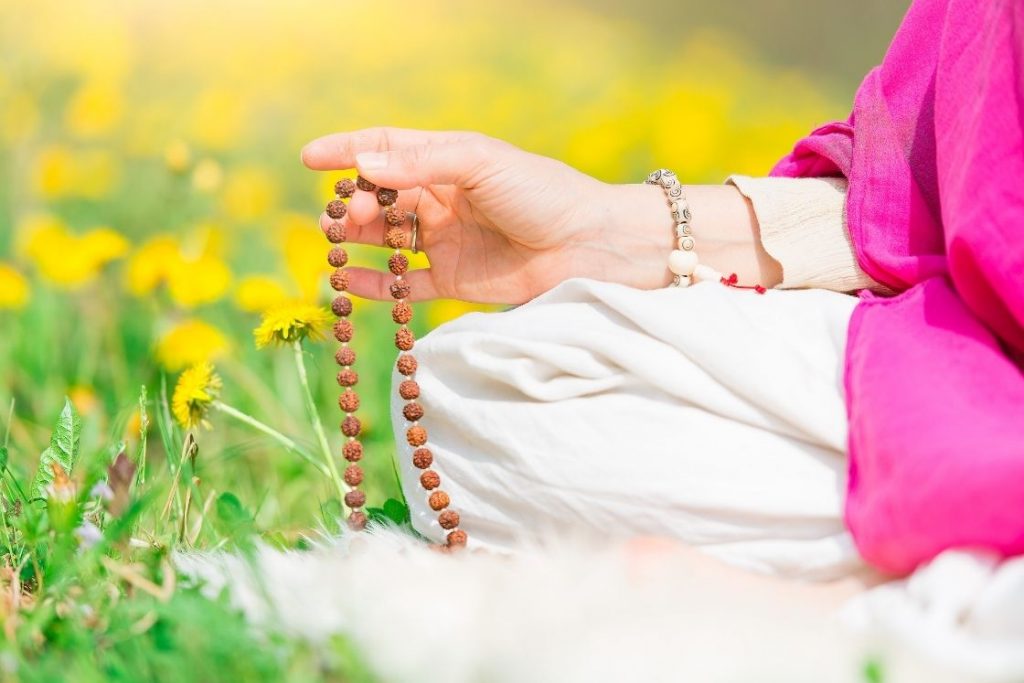
One of the most effective ways to calm a restless or disorganized mind is to establish a routine. Excess Vata often shows up as mental restlessness, worry, fear, or anxiety, especially when the light, subtle, and mobile qualities of Vata increase during cold and windy seasons.
Japa meditation, which involves the rhythmic repetition of a mantra, helps focus the mind and bring calm to racing thoughts. Regular practice of Japa can:
Make the mind more positive and focused. Support stress reduction and bring about beneficial lifestyle changes. Improve the quality and pattern of sleep. Increase patience and mental resilience.How to perform
Choose an area that is clean and private where you won’t be bothered. Avoid using any devices that can distract you. Choose a sitting position that you can hold for at least one to two hours. Avoid sitting straight on the ground. To stop the transpiration of heat, place a yoga mat or a cotton mat. Your right hand should be used to hold the mala. With the guru bead pointed up and the other beads dangling down, wrap the mala over the middle (or ring) finger. Be careful not to touch the mala with your index finger during this process as it is thought to hold negative energies. Take hold of the first bead with the thumb and move it away from the guru bead. As you grab and slide the first bead, recite the mantra. Hold it in place until one chant is complete. The eyes should be completely shut while engaging in Japa meditation. Repeat this motion until your mind becomes stable and concentrated.3. Yoga Nidra
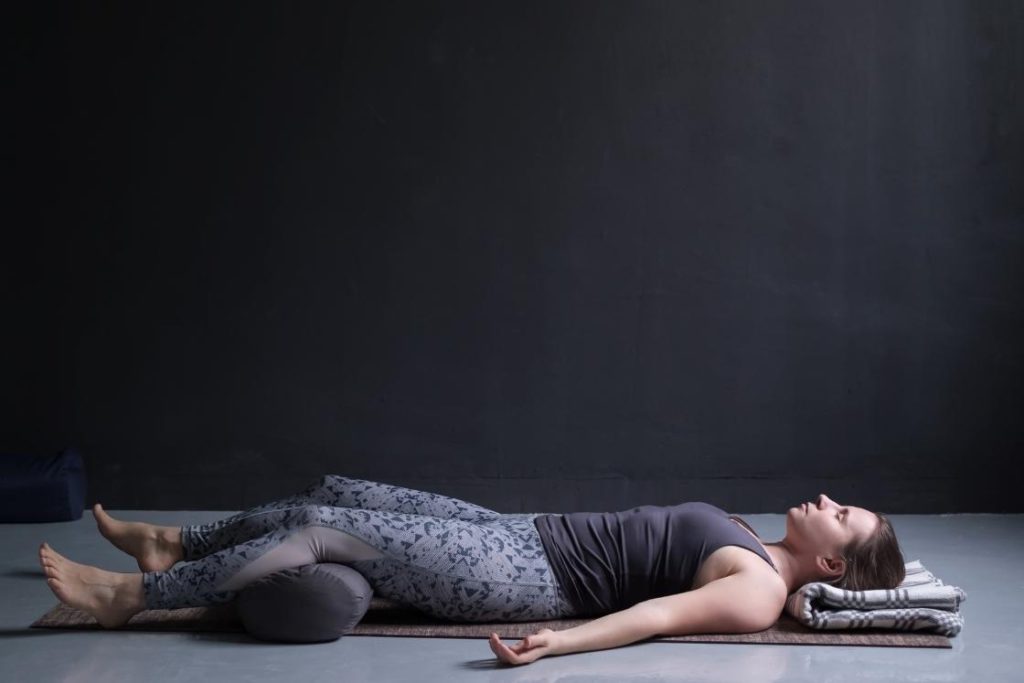 Image Source: Canva
Image Source: CanvaYoga Nidra is a practice that lies between wakefulness and sleep. It is a guided meditation where an instructor or audio guide leads you into a deeply relaxed state, awake yet calm.
Even a short session of Yoga Nidra is said to be highly restorative, with one hour often equated to four hours of deep sleep. The practice promotes deep relaxation and can help break harmful mental patterns.
To begin, lie on your back in Savasana (corpse pose). Follow the guided instructions to scan your body for areas of tension and gradually release them.
Yoga Nidra is suitable for everyone, but it is especially beneficial for Vata individuals, who often struggle with restlessness, anxiety, or difficulty letting go. It helps in conserving energy, calming the mind, and supporting restful sleep.
Additional benefits include enhanced creativity, better focus, improved memory, and clearer communication. Yoga Nidra can also help manage issues such as distraction, forgetfulness, over-spontaneity, and disorganisation, making it a powerful tool for balancing Vata dosha.
Conclusion
Vata individuals can start their yoga practice with a few rounds of warming pranayama to prepare the body. Next, they can follow with guided meditation using mudras to calm the airy nature of Vata. After that, a gentle warm-up yoga sequence can be done, followed by grounding poses to bring stability and balance to the mind and body.

 Konoly
Konoly 
























